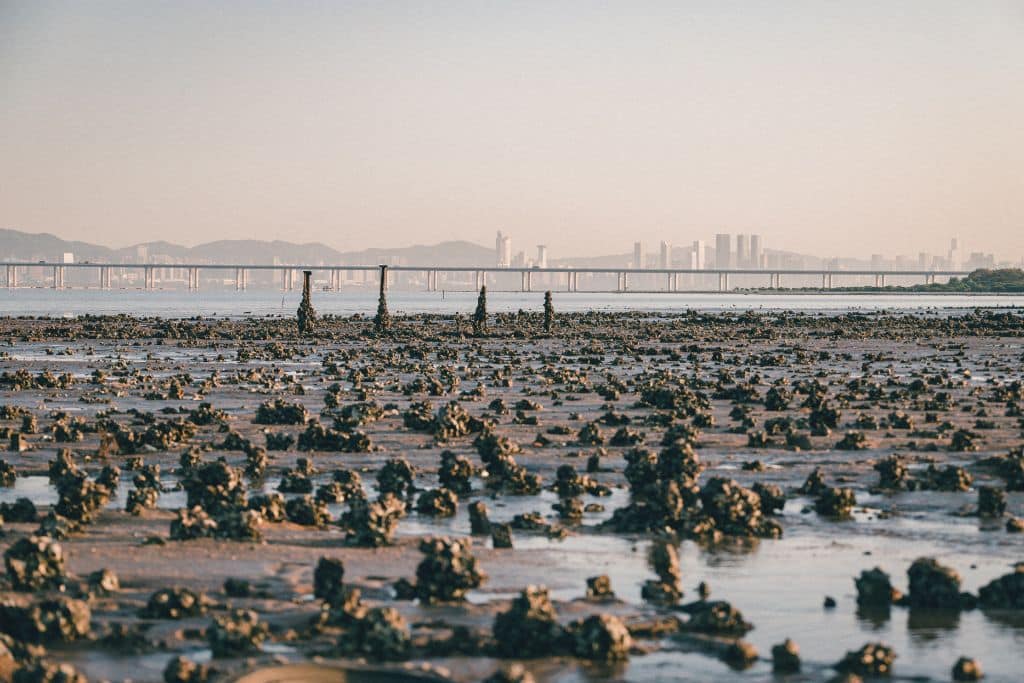In the bustling metropolis of Hong Kong, a dedicated team of conservationists from The Nature Conservancy (TNC) is spearheading an ambitious project to restore oyster reefs along the city’s coastline. Recognising the critical role of these once-thriving ecosystems in safeguarding marine biodiversity and improving coastal resilience, TNC has taken up the mantle to revive these submerged havens of life. By combining scientific expertise, community engagement, and innovative strategies, the NGO is paving the way for a brighter future for Hong Kong’s coastal ecosystems and the countless species that depend on them.
—
Hong Kong’s Lost Treasure
Oysters, often overlooked in their unassuming shells, possess remarkable abilities that benefit both marine life and humans alike, making them true “ecosystem engineers.” However, decades of overharvesting, habitat destruction, and water pollution have resulted in a significant decline in global populations, making oysters the world’s most endangered marine habitat, with an estimated 85% of reefs worldwide already wiped out.
For more than 700 years, oysters have been an important commodity in the Lingnan region, a geographic area that covers the modern Chinese subdivisions of Guangdong, Guangxi, Hainan, Hong Kong and Macau, both as food and as building materials. Indeed, oysters and other seashells are an essential source of lime, the predecessor of cement, making it an extremely attractive resource for both construction and agriculture.
Over the last century, Hong Kong’s coastal areas have seen significant habitat loss due to land reclamation, urbanisation, and over-extraction of lime. These activities have taken a toll on oyster populations, leading to a decline in their numbers and a degradation of their reef habitats. The lime industry in particular, which was thriving during the 19th and 20th century as it fed Hong Kong’s development, led to the functional extinction of oyster reefs that once stretched across an estimated 1,000 kilometres of coastline in the Pearl River Delta area.
Recognising the urgency of protecting these invaluable ecosystems, conservation efforts are now underway to restore and conserve oyster reefs in Hong Kong. Scientists, environmental organisations, and local communities are joining forces to raise awareness about the importance of oyster reefs and implement restoration.
Earth.Org spoke to Marine Thomas, Senior Conservation Project Manager at Hong Kong’s The Nature Conservancy (TNC) and currently responsible for overseeing TNC’s marine conservation projects on the ground, with a focus on restoring natural habitats and developing sustainable oyster aquaculture. She delved into the world of oyster reefs, explaining their role as ecosystem engineers, the threats they face in Hong Kong’s waters, and how TNC is working to restore these valuable ecosystems.
Oysters: The Guardians of the Sea
To understand the importance of oyster reef conservation, we must first look at the benefits these remarkable creatures provide. Indeed, as Thomas explained, while people mostly associate oysters with food, many do not know that they also fulfil several other functions important especially in the context of climate change.
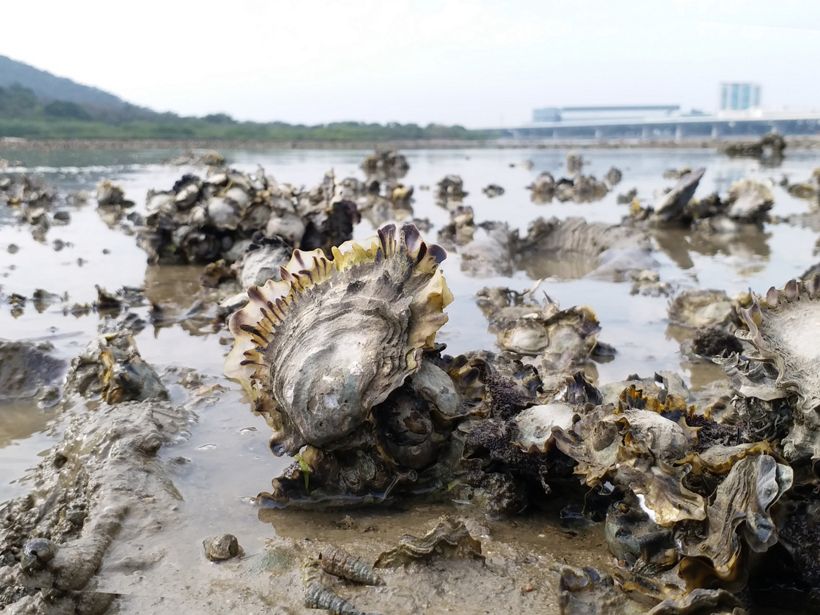
Oysters are renowned filter feeders that actively purify the surrounding water, with just a single oyster capable of filtering up to 200 litres of water a day. As they draw in water to extract nutrients, they inadvertently filter out pollutants and excess sediments, improving water quality in their habitat. A 2020 study conducted in Hong Kong found that a seven-square-metre oyster reef can filter up to one Olympic swimming pool in a single day, while a single Hong Kong oyster (Crassostrea hongkongensis) can filter up to 30 litres of water per hour at summer temperatures, one of the highest filtration rates among any oyster species.
However, oysters’ significance goes beyond water filtration. Their reefs act as natural nurseries, providing food, shelter, and protection for a diverse array of marine organisms. They serve as vital habitats for various fish species, crustaceans, and countless other forms of marine life, including shellfish and coral reefs, fostering biodiversity and supporting the intricate web of life beneath the waves.
Oysters also play a vital role in shoreline stabilisation, making them crucial in maintaining the integrity of coastal areas. Indeed, the dense and intricate structure of oyster reefs creates a physical buffer that absorbs and dissipates wave energy, reducing the impact on the shoreline. By breaking up incoming waves, reefs help minimise erosion and prevent the loss of sediment from coastal areas. This erosion control function is particularly significant in areas prone to storms and tidal fluctuations, as oyster reefs can help mitigate the damaging effects of these natural events.
Oyster reefs also promote sediment accumulation and stabilisation. As oysters filter water, they extract particles and sediments, which then settle on their shells and the reef structure. Over time, this accumulation of sediment contributes to the development of a stable substrate, enhancing the resilience of the shoreline. The presence of oyster reefs promotes the formation of marshes, seagrass beds, and other coastal habitats that rely on the deposition of sediment for their growth and survival.
You might also like: Oyster Farms Boost Biodiversity, Confirm Potential for Reef Restoration: Study
The Beginnings
In 2017, TNC partnered up with the University of Hong Kong (HKU) to promote the conservation of oysters across the territory.
“Conservation is a very long process,” said Thomas. “In order to restore an ecosystem, you first have to understand the ecosystem and the story behind it. You have to map what’s left, identify the different species present in the area, and what has been threatening their existence.”
From years of intense research on site and drawing from their expertise in restoring oyster reefs at more than 150 sites around the world, TNC and HKU built the knowledge necessary to carry out conservation work and awareness campaigns. Indeed, as Thomas explained, most people in Hong Kong have never seen or heard about these ecosystems before and are not aware of their importance.
“While we are excited by the biological feasibility of restoration, unfortunately, the human aspect remains our biggest challenge to bring these habitats back at scale. Shellfish habitats are still severely under-protected in Hong Kong, with very little public awareness of their ecological value. And little awareness makes these ecosystems vulnerable to development and reclamation.”

Behind the little awareness, there is also government inaction. As Thomas put it, marine conservation in Hong Kong is “severely lacking.” Indeed, while some development projects in Hong Kong are subject to Environmental Impact Assessments – which aim to identify potential impacts of a project in the early planning stages, as well as any alternatives or measures to mitigate it – there are no firm standards for mitigation projects and the environmental impact is only monitored for a maximum of two years.
“You can’t just call anything restoration. Restoration needs standards and long-term monitoring. Without them, we cannot achieve anything in the long-term,” said Thomas. “The government needs to recognise shellfish, work to protect these endangered ecosystems, and provide funds for restoration at scale.”
Conservation Efforts
“We are still at the beginning of our conservation efforts but we are almost at the end of our journey to find the secret sauce,” said Thomas, adding that, while restoration projects across Hong Kong are still in the early phase, years of research have been crucial in understanding how these ecosystems work, what has led to their functional extinction, and what the most efficient ways are to bring them back. Nevertheless, she also recognised that some of Hong Kong’s oyster reefs are so degraded that bringing them back is no longer a possibility.
In 2021, TNC and HKU launched their first pilot programme at the government-owned Hong Kong International Airport (HKIA) to mitigate the impacts of a recently completed expansion project that included the construction of a third runway. To build the 3,800-metre runway, which became operational in July 2022, about 650 hectares of land to the north of the existing airport island had to be acquired through land reclamation on top of disused contaminated mud pits. According to a 2015 update on the construction issued by the Legislative Council Panel on Economic Development, some 100 million cubic metres of marine sand were expected to be required for the reclamation works, with obvious consequences for marine ecosystems.
Reclamation works in Hong Kong have always been highly controversial, with environmental groups tirelessly advocating for stricter standards. The third runway project in particular had already drawn the attention of environmental advocates for its potential impact on populations of pink dolphins, whose existence in Hong Kong is already highly threatened.
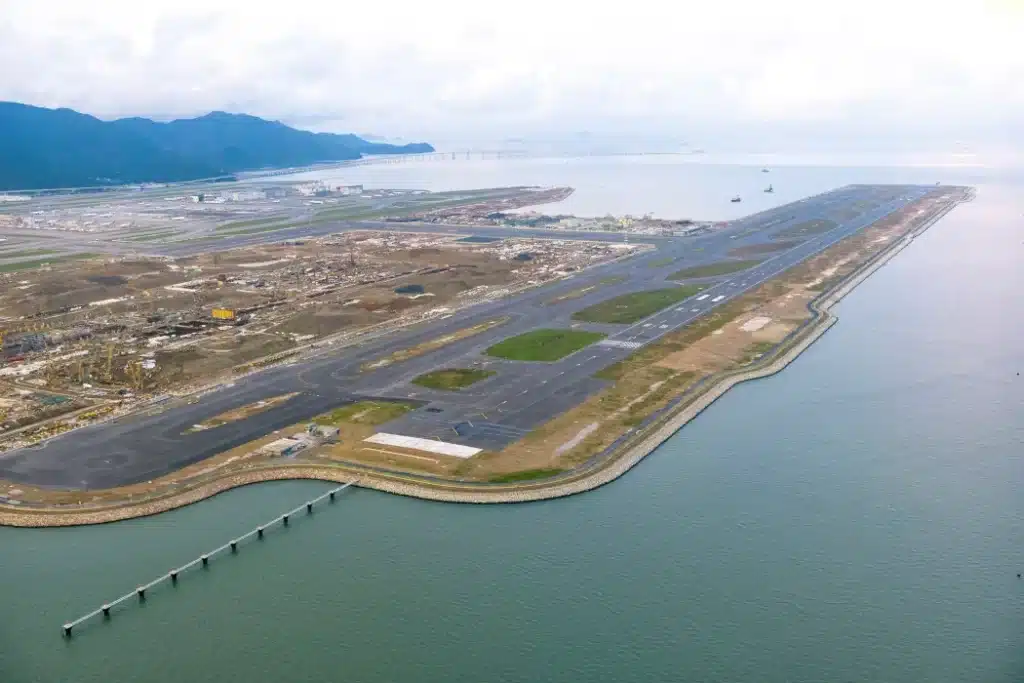
“I’m not going to lie, the airport runway is a challenging environment, it’s severely degraded,” said Thomas, who also recognised that HKIA nevertheless remains one of the few government-owned bodies to go “above and beyond” to fund restoration projects – “a good thing,” as she put it, considering that there is no requirement to do so.
“Considering that the government sets no standards whatsoever to define the success of a mitigation project and only limits monitoring over a maximum of two years, definitely not enough to understand whether a project was successful or not, we were positively surprised when the airport approached TNC and tasked it with retrofitting the area.”
Restoring a Degraded Ecosystem
“How we restore an ecosystem really depends on the challenges of the area,” explained Thomas.
In Hong Kong, construction, land reclamation, and lime extraction irreversibly affected the foundation of oyster reefs, which need a hard surface – typically other oysters or oyster shells – to reproduce.
“Because we have taken out the substrate that oysters need to reproduce, the obvious first step is to reintroduce that structure,” the conservationist explained.
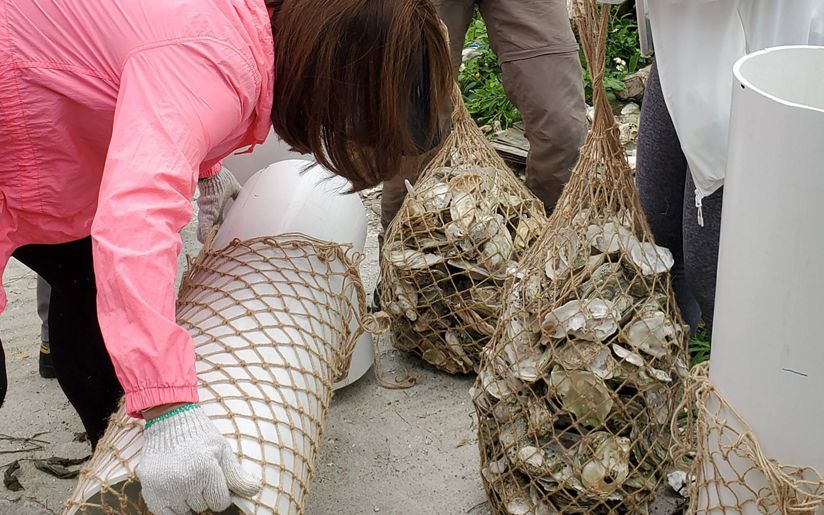
Materials such as limestone and weathered concrete, which is rough and uneven and thus makes up the perfect foundation for a reef, are all great materials that can be used to rebuild the surface. But what one might not expect is that even oyster shells are a great option.
Thanks to the “Save Our Shells” project, an initiative funded by the Airport Authority’s (AA) Marine Enhancement Ecology Fund (MEEF) that recycles discarded shellfish shells and repurpose them as substrate for new reefs, TNC has begun recovering lost ecosystems. The NGO is working with restaurants, hotels, and the local aquaculture community to retrieve oyster shells which can be replanted – typically in the summer months – to create a new substrate for reefs to form and grow.
The shells – particularly imported ones – are left in the sun for a few months to kill off any diseases in a process known as weathering. When ready, they are bagged up and taken to reef restoration sites where TNC staff and volunteers place them into the sea as a “settlement substrate” for juvenile oysters to grow onto.
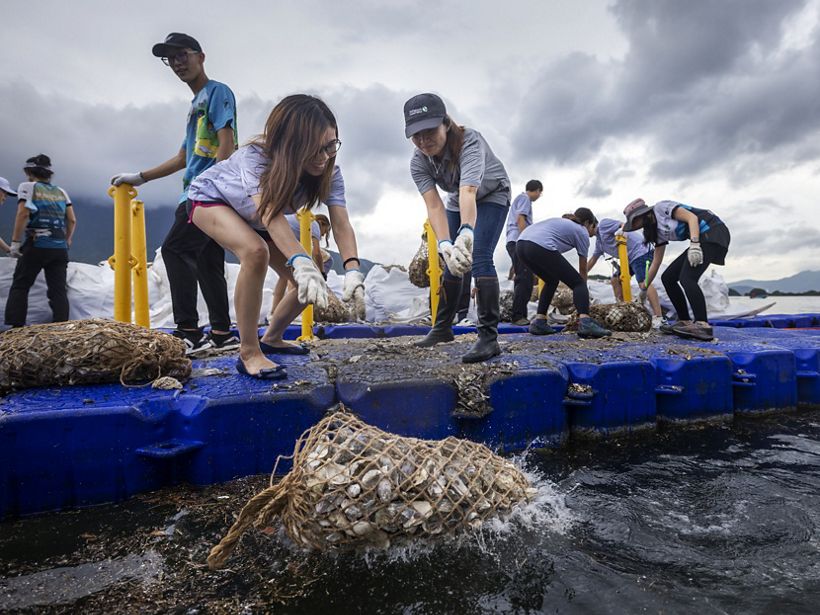
The NGO is also working with experienced local oyster farmers from the Lau Fau Shan and Yung Shue O aquaculture communities to make the industry more sustainable. “Farmers are the real custodians of the area and they understand these ecosystems like no one else,” said Thomas.
This collaboration led to two pilot oyster reefs in Hong Kong’s Lau Fau Shan and Tolo Harbour using discarded shells. In the coming years, TNC will conduct ongoing monitoring of the reef’s growth and its impact on biodiversity and water quality. If successful, the data collected during these pilots and the restoration methods implemented can be applied to future, larger restoration projects.
Featured image: Derek Tang
—
Five years of hard work by TNC and HKU culminated in an exhibition that aims to raise awareness about the cultural, historical, and ecological importance of these ecosystems in Hong Kong and shine a light on the NGO’s efforts to work alongside the government to protect and restore them. If you’re in Hong Kong, you can visit ‘The Oyster Odyssey: Restoring Hong Kong’s Lost Treasure’ exhibition at the Hong Kong Maritime Museum until January 31, 2024. For more information, visit the exhibition’s website.
You might also like: The Benefits And Challenges of Protecting Oyster Reefs in Hong Kong








